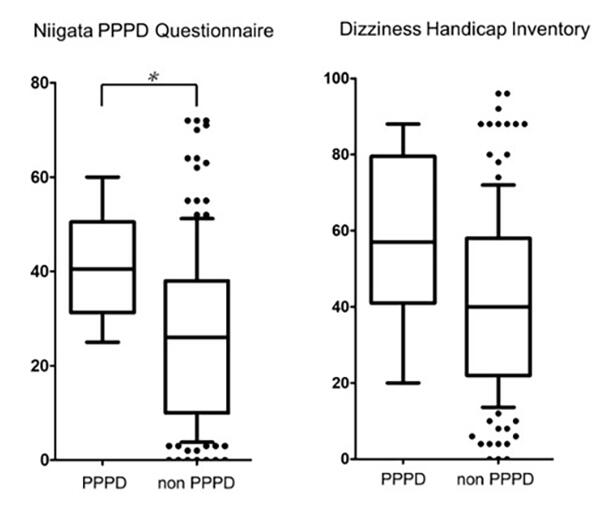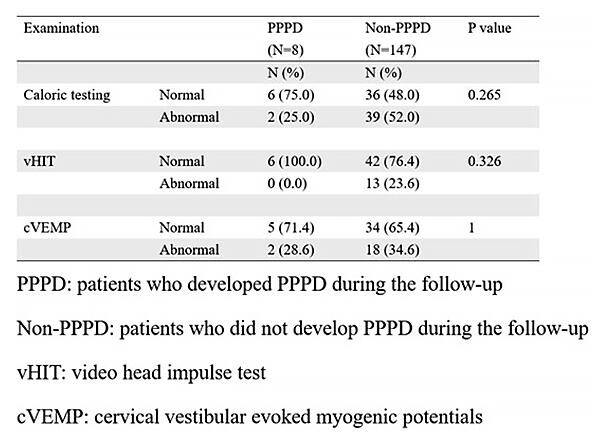Persistent perceptual-postural dizziness (PPPD) is a chronic functional dizziness disorder lasting more than three months. PPPD is believed to occur following acute vertigo, but it is not clear which patients with acute vertigo develop PPPD. In addition, dizziness symptoms caused by PPPD is characterized by compounding three exacerbating factors: (1) standing and walking, (2) movement, and (3) visual stimulation.
Focusing on these exacerbating factors, a research group led by Kayoko Kabaya, a lecturer at Nagoya City University Graduate School of Medical Sciences Department of Otolaryngology, Head and Neck Surgery, investigated the exacerbating factors of PPPD, the severity of vertigo, and tested vestibular functions to determine factors affecting the development of PPPD in patients who had acute vertigo for less than three months after onset.
"PPPD is a chronic dizziness disease that is more common in young people, who are more severely affected, and suffer from significant social loss," says Dr. Kabaya. "Due to its refractory nature, it is important to identify patients prior to the onset of PPPD and prevent its development. As PPPD often follows acute vertigo, we examined the background of all patients with acute vertigo and the characteristics of patients who subsequently developed PPPD."
The results showed that of 155 patients with acute vertigo onset of less than three months who were surveyed at the time of their first visit using a questionnaire on exacerbating factors of PPPD (NPQ), 50.3%, or half of the patients, had an exacerbating factor. Of the 155 cases included in the study, eight cases were observed to have later developed PPPD. Seven of the patients had exacerbating factors at the time of their initial diagnosis. The remaining patient also reported worsening dizziness symptoms on three exacerbation factors, although the NPQ score of 25 was below the cutoff value. Furthermore, a comparison of the eight cases with PPPD to those without PPPD showed that the group with PPPD scored significantly higher on the NPQ, but there were no significant differences between the two groups in the dizziness handicap inventory (DHI) or the presence of abnormalities on vestibular function tests.

Right, Dizziness Handicap Inventory (DHI) scores of patients in PPPD and non-PPPD groups. The total scores of DHI of patients in PPPD and non-PPPD groups.
Provided by Nagoya City University
"We found that patients who developed PPPD already had characteristics of PPPD from the early onset of vertigo, and we felt this to be one of the predictive factors for the development of PPPD," says Dr. Kabaya. "In order to reduce social losses due to PPPD, we would like to search for other predictors of PPPD and establish a highly accurate prediction of PPPD onset, as well as preventive interventions for cases with predictors."

Provided by Nagoya City University
■ Questionnaire on exacerbating factors of PPPD (NPQ): The Niigata PPPD Questionnaire has four questions for each of the three PPPD exacerbating factors. Each is rated on a scale of 0 to 6, with higher scores indicating worsening symptoms with exacerbating factors. A total of 27 points or more is considered accurate for the diagnosis of PPPD.
Journal Information
Publication: Laryngoscope Investigative Otolaryngology
Title: Presence of exacerbating factors of persistent perceptual-postural dizziness in patients with vestibular symptoms at initial presentation
DOI: doi.org/10.1002/lio2.735
This article has been translated by JST with permission from The Science News Ltd.(https://sci-news.co.jp/). Unauthorized reproduction of the article and photographs is prohibited.




